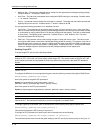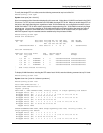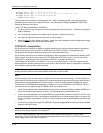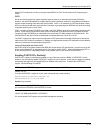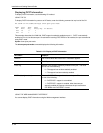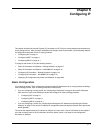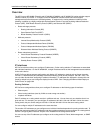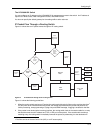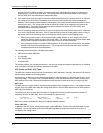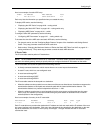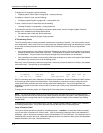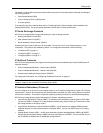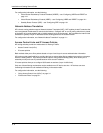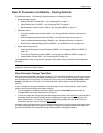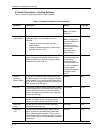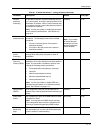
Installation and Getting Started Guide
address and TCP or UDP port listed in the session table entry and sending the packet to a queue on the
outgoing port(s) listed in the session table. The routing switch selects the queue based on the Quality of
Service (QoS) level associated with the session table entry.
3. If the session table does not contain an entry that matches the packet’s source address and TCP or UDP port,
the routing switch looks in the IP forwarding cache for an entry that matches the packet’s destination IP
address. If the forwarding cache contains a matching entry, the routing switch forwards the packet to the IP
address in the entry. The routing switch sends the packet to a queue on the outgoing port(s) listed in the
forwarding cache. The routing switch selects the queue based on the Quality of Service (QoS) level
associated with the forwarding cache entry.
4. If the IP forwarding cache does not have an entry for the packet, the routing switch checks the IP route table
for a route to the packet’s destination. If the IP route table has a route, the routing switch makes an entry in
the session table or the forwarding cache, and sends the route to a queue on the outgoing port(s).
• If the running-config contains a Policy-Based Routing (PBR) definition or an IP access policy for the
packet, the software makes an entry in the session table. The routing switch uses the new session table
entry to forward subsequent packets from the same source to the same destination.
• If the running-config does not contain a PBR definition or an IP access policy for the packet, the software
creates a new entry in the forwarding cache. The routing switch uses the new cache entry to forward
subsequent packets to the same destination.
The following sections describe the IP tables and caches:
• ARP cache and static ARP table
• IP route table
• IP forwarding cache
• IP session table
The software enables you to display these tables. You also can change the capacity of the tables on an individual
basis if needed by changing the memory allocation for the table.
ARP Cache and Static ARP Table
The ARP cache contains entries that map IP addresses to MAC addresses. Generally, the entries are for devices
that are directly attached to the routing switch.
An exception is an ARP entry for an interface-based static IP route that goes to a destination that is one or more
router hops away. For this type of entry, the MAC address is either the destination device’s MAC address or the
MAC address of the router interface that answered an ARP request on behalf of the device, using proxy ARP.
ARP Cache
The ARP cache can contain dynamic (learned) entries and static (user-configured) entries. The software places a
dynamic entry in the ARP cache when the routing switch learns a device’s MAC address from an ARP request or
ARP reply from the device.
The software can learn an entry when the switch or routing switch receives an ARP request from another IP
forwarding device or an ARP reply. Here is an example of a dynamic entry:
IP Address MAC Address Type Age Port
1 207.95.6.102 0800.5afc.ea21 Dynamic 0 6
Each entry contains the destination device’s IP address and MAC address.
Static ARP Table
In addition to the ARP cache, routing switches have a static ARP table. Entries in the static ARP table are user-
configured. You can add entries to the static ARP table regardless of whether the device the entry is for is
connected to the routing switch.
NOTE: The routing switches have a static ARP table but the HP 6208M-SX does not.
The software places an entry from the static ARP table into the ARP cache when the entry’s interface comes up.
6 - 4



